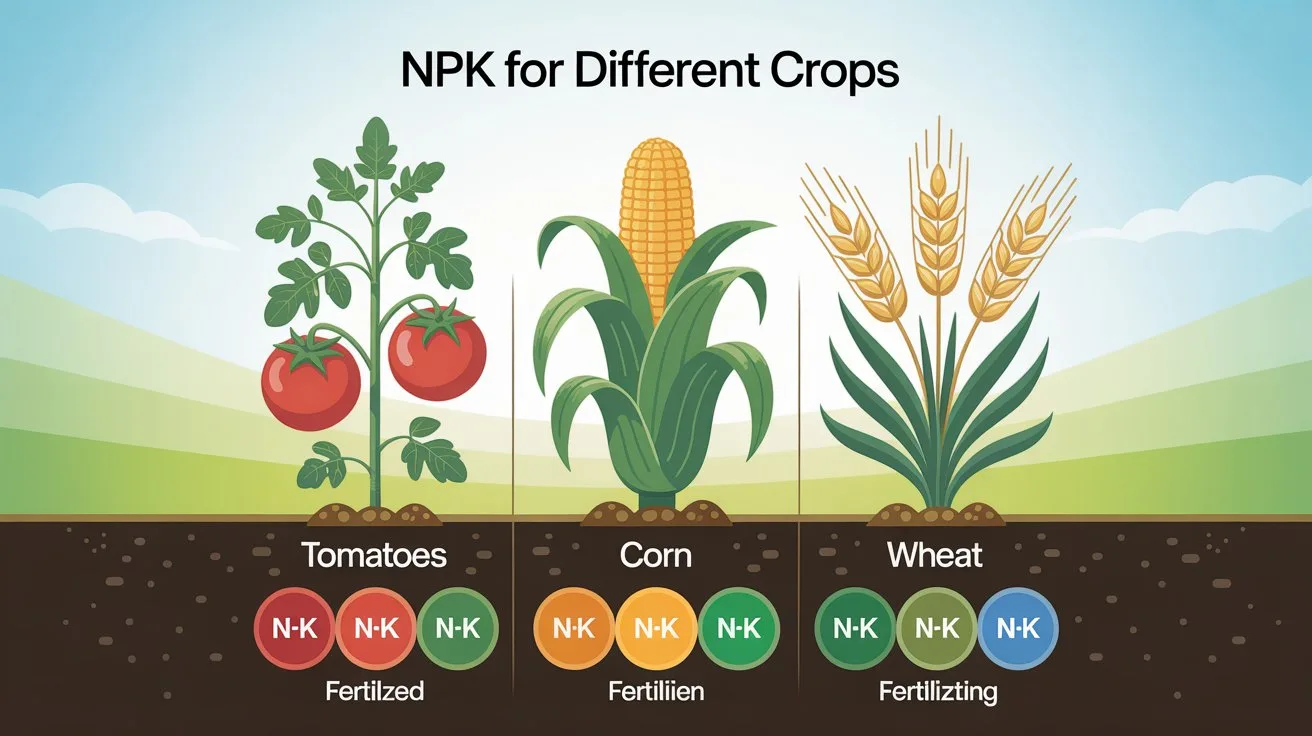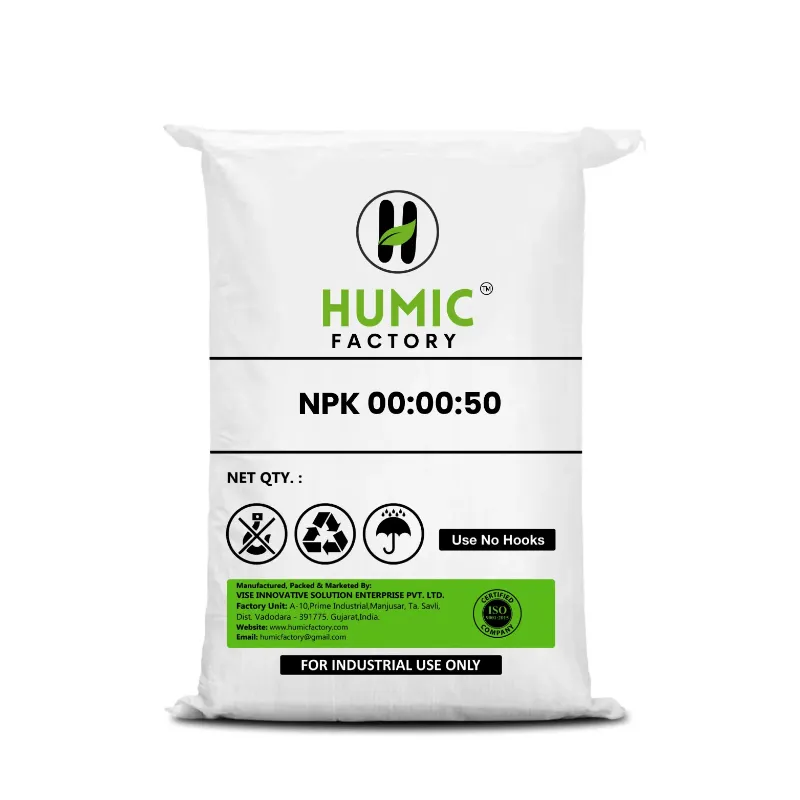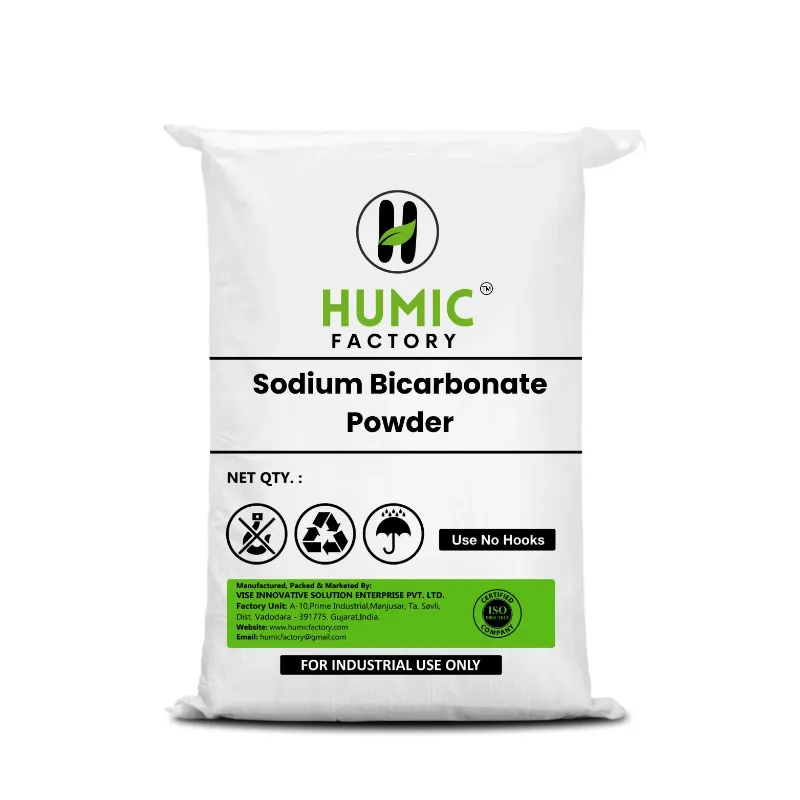Just as developing nutrition plans for different people takes into account the ethnic, cultural, and personal differences between diets, NPK for crops can be used in the same regard. You will give NPK nutrients only if the nutrient ratios are paid close attention to and the plants receive the right levels of NPK at the right stage(s) for optimum crop growth. All crops benefit from NPK nutrition that supports stronger roots, greater growth strength, and heavier yields; whether it's vegetables, fruits, grains, or flowers, each crop has its optimum growth conditions.
NPK significance:
Plants need nutrients to grow just like babies need iron and calcium for health; therefore, the nutrients nitrogen (N), phosphorus (P), and potassium (K). NPK is our main plant nutrient; in fact the three together are the foundation of every healthy plant. Nitrogen facilitates leaf and stem growth; phosphorus facilitates root, flower, and seed development; and potassium develops stems and fruit and flower varieties.
Distinct total plant nutrients ratios at specific nutrient stages of growth signify crops need not one fertilizer only.
NPK Fertilizer for Maize:
Maize (corn) is one of the thirstiest crops for nutrients. Maize grows rapidly, it has a large biomass, and it needs a strong root system to support cob development. Getting the correct NPK during critical times helps maize with kernel filling and reducing lodging.
Recommended NPK fertilizer for maize:
- 20-10-10 during early vegetative stage (N uptake is high).
- 10-20-20 just before tasseling and silking to promote ear development.
- Split application of NPK with the right timing will usually lead to higher grain-yield with reduced vulnerability of the crop during climatic extremes.
Good Rules of Thumb for NPK Applications for Different Crop Types:
- Leafy vegetables (e.g., spinach, lettuce) → higher nitrogen
- Root crops (e.g., carrot, beetroot) → higher phosphorus and potassium
- Fruiting vegetables (e.g., brinjal, capsicum) → well-balanced NPK
- Pulses and legumes → moderately use NPK, but ensure phosphorus is available to allow good nodulation to occur
When applying the right NPK at the right ratios allows the crops to establish balanced growth, disease resistance, and enable the quality of harvestable exports or produce to be higher.
Introduction: Why Understanding NPK Matters in Agriculture
Like babies require gentle and nutrient-rich nourishment for healthy growth, plants also need a balanced diet of nutrient-rich essentials in order to thrive; which would include nitrogen (N), phosphorus (P), and potassium (K). These three are the basis of NPK nutrients, and understanding what these do for crop farming is key to growing stronger roots, greener leaves, and more yield.
No matter if you are growing backyard tomatoes, or planting a large scale maize farm, getting NPK right for the different crops ensures plant vitality, higher yields, and long-term health of the soil.
The importance of NPK for plants and productivity
NPK for plants is similar to the balance of nutrients required for children to grow up healthy.
Each nutrient has a job to do:
- Nitrogen (N) produces leaf growth and chlorophyll.
- Phosphorus (P) develops roots and flowers.
- Potassium (K) increases disease resistance and improves fruit and seed quality.
When you use the correct NPK fertilizer for the crop you are growing it increases not just the growth of your plants but also the quantity and quality of your yield.
For example:
- Tomato fertilizer NPK like a 5-10-10 supports the development of juicy fruit.
- Strawberry fertilizer NPK like 8-12-12 supports berry sweetness, and firmness.
NPK fertilizer for maize is often 20-10-10 early on, which provides thick and healthy stalks and good grain fill.
From hobby gardening to commercial farming—NPK is key
If you are caring for a few pots on your terrace, or thousands of acres of land, NPK is key. Home gardeners may see tomato plants form more flowers, but not tomatoes due to excessive nitrogen. Using a balanced tomato fertilizer NPK will help encourage the plant to shift growing from leaves to fruit.
In agriculture, such as maize production, using the wrong NPK fertilizer for maize can result in poor cob or kernel formation. Using it at the right time and knowing the right way is critical.
Balanced NPK fertilization strategies across scales:
- Use fertilizer NPK based on the plants' growth stages (seedling, vegetative, flowering, and fruiting).
- Alternate granular and foliar methods based on immediacy and uptake.
How balanced fertilization influences crop outcomes
The proper NPK nutrients will speed up the growth of crops and build resiliency. Balanced fertilization:
- Lessens occurrence of nutrient deficiency diseases;
- Improves root absorption ability;
- Improves plant tolerances to stress from environmental conditions like drought or pests;
- Encourages small-medium uniform growth with good flowering and timely maturity.
Just as each type of millet provides specific benefits to a baby, each crop responds differently to NPK. In order to ensure you aren’t over feeding one nutrient and under feeding another you must understand how to apply NPK for different crops.
To achieve the best results:
- Soil test a parcel, field, or region before you fertilize it;
- Use crops specific NPK formulations like strawberry fertilizer NPK, or maize-specific formulations;
- Be mindful of growth phase, amount of rainfall, and how the plant reacts: Adapt as necessary.
NPK Basics: What Every Grower Should Know
It doesn't matter if you are tending to tomatoes in your backyard or plant a mixture of millets or corn on hundreds of acres, knowing your NPK nutrients is the first step to healthy plants and hitting maximum tonnage. Similar to the different millets providing different nutritional requirements to day-old babies, different crops utilize different combinations of NPK for optimal growth and development. Understanding the foundations of NPK (Nitrogen, Phosphoric acid, and Potassium) will help you determine your best fertilizer options and apply your nutrients more efficiently no matter what farming scale you operate at.
What is NPK and how do NPK nutrients work?
NPK stands for Nitrogen (N), Phosphorus (P) and Potassium (K) which are the three major macronutrients all plants need in quantities greater than the other essential nutrients. Each element has its unique function:
- Nitrogen (N) - Promotes bushy green growth with lots of leaf and stem development. This is especially important during the early vegetative stages.
- Phosphorus (P) - Aids with establishment of root systems, as well as healthy flowering and fruit formation.
- Potassium (K) - Improves general strength of the plant, increases disease resistance and the quality of fruit.
NPK nutrients taken together are like a complete meal plan for your crops. After all, if we do not get the proper balance and combination of nutrients your plants will not get the same yields, not to mention healthy and strong roots.
As an example:
- A tomato fertilizer NPK should have higher phosphorus and potassium levels during the flowering period for better fruiting.
- A strawberry fertilizer NPK would require more potassium to promote sweetness, size and shelf life.
- An NPK fertilizer for maize will start off with more nitrogen to promote vegetative growth, then move to more phosphorus and potassium for cob development.
Understanding fertilizer labels and ratios
All fertilizer bags have three numbers like 10-10-10 or 5-10-5 - the NPK ratio. These numbers tell you what percentage of that nutrient is in the fertilizer.
For example:
- A fertilizer labeled 10-10-10 means that is has 10% N, 10% P, and 10% K - this is a great balanced fertilizer for general use.
- A fertilizer labeled 5-15-30 is low in nitrogen, but high in phosphorus and potassium - excellent for fruiting and flowering crops.
Reading and using:
- Identify the plant stage (leafy, root, or flowering).
- Select the proper NPK ratio that reflects the plant type and nutrient demand.
- Use soil tests to target applications more accurately.
A mismatch of NPK and plant stage can result in excessive leafy plant growth and poor fruit.
The science behind nitrogen, phosphorus, and potassium
In order to understand how they support plant functions let's take a closer look at each element:
1. Nitrogen (N):
- Important for chlorophyll and vegetative growth
- Important for leafy vegetables like spinach and coriander
- Excessive use of nitrogen can cause delayed flowering and reduced fruit size
2. Phosphorus (P):
- Important for energy transfer and strength of roots
- Needed for root establishment early in crop's life (e.g., maize)
- Important for high reproductive outputs (e.g., tomatoes, berries)
3. Potassium (K):
- Important for cell wall strength and for regulating plant water use
- Increases plant disease resistance, drought resistance, and stress tolerance
- Improves fruit quality--important when thinking of strawberry fertilizer NPK project
Any elements, must be in the proper proportions, and the right methods must be used (i.e., basal, top-dress, fertigation).
Quick tips for growers:
- Test your soil to understand what your soil is lacking before applying NPK.
- Apply tomato fertilizer NPK during early bloom period to maximize fruit set.
- For strawberry fertilizer NPK, use one predominately K, to maximize flavour and shelf life of the fruit.
- For maize, use NPK fertilizer in split applications: early nitrogen, later use phosphorus/potassium.
- Different crops warrant different NPK. For example, there is no one applicable or right proportion for best outcomes.
- Be sure your fertiliser practice reflects the plant growth stage, soil type and crop requirement.
Crop-Specific Strategies: NPK for Different Crops
Just like different millet varieties have their own respective and distinct nutritional benefits for babies, just as many different crops are going to want different combinations of NPK nutrients for optimal growth. Certainly, it is important to consider how we can customize NPK for the different crops being grown, so that all growers can, for the most part, maximize the capacity of their fields and gardens, be they hobby or commercial growers - this ability seems too good to not want to at least try and explore!
Each plant utilizes and incorporates use nitrogen (N), phosphorus (P), and potassium (K) at different rates through various growth stages. We will explore three common crops and how to apply specifically targeted NPK applications to reach our objectives of growth, health, and yield.
Tomato Fertilizer NPK – Best ratios for fruiting and flowering
Tomatoes are nutrient-hungry plants that go through stages of development, each with its own balance of NPK nutrients.
Early Growth Stage:
- When tomatoes are growing leaves and stems they require more nitrogen.
- Use an NPK ratio on your fertilizer like 10-5-5 or 12-8-6.
Pre-Flowering and Fruiting Stage:
- Furnish tomatoes with more phosphorus and potassium to assist flowering and fruiting.
- Ideal tomato fertilizer NPKs are 5-10-10, 8-12-12, or 10-10-20
Tips:
- Avoid using too much nitrogen during the stage, it will create leafy plants not too many tomatoes.
- Use NPK for a plant like a tomato in two split doses, the first or base dressing can be applied early in the season followed-up with a liquid or foliar feed.
- Add calcium and magnesium for firmer fruit and better shelf life.
Strawberry Fertilizer NPK – Boost sweetness and yield
Strawberry plants are susceptible to many challenges, so a well-balanced feeding program is essential for developing juicy, sweet berries and healthy runners. The right strawberry fertilizer NPK will not only yield more berries, but will deliver more flavorful fruit as well.
Before Flowering:
- Use a balanced fertilizer or a phosphorus-rich fertilizer such as 10-10-10 or 8-12-12 to promote root development and flower set.
During Fruiting:
- Use a formula higher in potassium (e.g. 5-10-15 or 8-12-20) to improve the sugar content and firmness of the berries.
- If you incorporate the following tips, your strawberries may just become more colorful, sweeter and disease resistant because of the correct NPK nutrients and fertilizer....
Apply NPK granular fertilizer as a base before planting.
- Consider using fertigation or foliar sprays during peak flowering for better nutrient absorption.
- Avoid excessive nitrogen or your fruiting may slow down and flavors may be reduced substantially.
NPK Fertilizer for Maize – Strong stalks and grain fill
Maize (corn) is a heavy feeder. They are very fast growing using lots of biomass to produce high yields. The correct amount NPK fertilizer for maize is essential to successful growing of the crop.
When maize is in the vegetative phase it requires considerable nitrogen for leaf development and photosynthesis. Follow a NPK blend like 20-10-10 or 25-10-10 at sowing.
During the reproductive phase, from tasseling to grain fill, there is no need for high nitrogen and the emphasis must be on phosphorus and potassium for cob formation and kernel development. Switch to 10-20-20 or 12-24-18 NPK fertilizer formulas.
Here are some tips:
- Use split applications. For example in the beginning use granular NPK fertilizer at sowing time and top-dress later with urea or liquid phosphorus.
- Maize will benefit from using micronutrients like zinc and sulfur. Finally, always fertilize based on soil tests for best results.
Takeaways:
- There is no one-size-fits all NPK strategy for every crop and it is critical to follow plant based NPK strategy for the best results.
- If you make custom fertilizer program like tomato fertilizer, use NPK with potassium and phosphorus to maximize fruiting. Likewise, if you use strawberry fertilizer, use the NPK with the highest potassium to maximize the taste and texture of the berry.
- For maize, always start with high nitrogen on the front end and potassium on the back end.
When applying NPK for plants, apply your fertilizer in the right way—whether its through broadcasting, side dressing, or fertigation as determined by crop type, and field type. Lastly, balance synthetic and organic NPK to support soil health and sustainability.
NPK for Vegetables, Fruits, Cereals, and Roots
Every plant is different, so are its nutrient needs. Just like babies need different nutrients at different points of growth, different crops have different determinants of an ideal NPK nutrients (Nitrogen, Phosphorous and Potassium) at different points in their life cycle. Whether you are growing spinach, strawberries, maize or potatoes; understanding the crops and the ideal NPK helps ensure stronger growth, better resilience and improved yields.
Ideal NPK for leafy vegetables, tubers, and legumes
Leafy vegetables, tubers and legumes use and uptake NPK nutrients differently. Understanding their nutrient demands and the right fertilizer ratios leads to healthier plants and greater harvest per square foot.
- Leafy Vegetables (e.g., spinach, lettuce, fenugreek): Only need N for turgid green leaves; can use an NPK mix like 20-10-10 or 16-8-8 early in growth. Need to watch levels of K as it will slow tartate leaves expansion.
- Tuber Crops (e.g., potatoes, carrots, beets): Need high P and K for healthy root development and quality tubers. Suggested ratio: 10-20-20 or 5-15-30.
- Legumes (e.g., beans, peas, lentils): Same moderate NPK levels since legumes can fix their own N. Best use NPKs level of either 5-10-10 or depending on soil condition a 7-14-21.
These NPKs are applied for crops in there early stages via granular base feeding and augments flowering/fruiting with liquid or foliar applications.
Fertilizer scheduling by crop life cycle
Like babies are fed differently as they grow, crops should be fed differently based on their stage of development. Fertilizer scheduling helps give the crop the right NPK at the right time based on the type and development stage of the crop.
Stage 1: Germination & Early Growth
- Focus: Nitrogen-heavy for leaf and stem growth.
- From a tomato fertilizer such as NPK 12-8-6 during vegetative phase;
Stage 2: Flowering & Fruiting
- Focus: Increase phosphorus and potassium to promote reproduction.
- Start using a strawberry fertilizer with a higher proportion of P and K, such as 8-12-20 or even 5-10-15;
Stage 3: Grain Fill or Maturity of Tuber
- Focus: A potassium rich blend for quality and storage ability.
For maize, you may switch to NPK fertiliser for maize, such as 10-20-20, during grain fill; split application is preferable, you may do a base dose at planting and then add as a supplement through top dressing or fertigation as needed.
Matching NPK for plants based on their nutrient demands
The right fertilizer can help you realize the potential of your crops, as fertilizer needs to be matched to crop type and crop growth habits. The categories—vegetables, fruits, cereals, and roots—have differences in metabolism that will affect how we apply the NPK nutrients.
Vegetables:
- An abundant supply of nitrogen is needed in the early development but then this needs to be tapered off further towards the harvest time before root vegetables are harvested to avoid the bitter taste of the green tops.
Fruits:
- Fruits are usually subject to balanced NPK in the early stages and then an equal balance of Potassium for fruit formation. If the goal is to have sweeter, firmer berries, then strawberry fertilizer NPK is beneficial.
Cereals:
- Cereals will need a high amount of nitrogen early (for tillering) along with a balance of P and K in regard to grain fill. Applying NPK fertilizer for maize will vary depending on your soil type and stage of growth (e.g. 25-10-10 → 10-26-26).
Root Crops:
- Root crops should be treated with low nitrogen while utilizing high phosphorus and potassium to promote tuber size/quality.
As always, you should take a soil test and adjust your plan for your fertilizer application based on the soil being deficient or excessive in something.
Soil Testing and Adjusting NPK Fertilizer for Accuracy
Feeding crops without a soil test is like giving a baby supplements without asking what he/she has already been eating. It will only lead to a deficiency, or worse, an over-supply of a harmful excess. This is why soil testing is probably the most important thing to do before trying to apply any NPK nutrients - whether you are growing vegetables, fruits, cereals, or root crops. It should confirm what your NPK for any particular crop each crop should be adjusted to what your soil requires.
Why soil testing is critical before applying NPK
Soil testing helps you determine how much of each nutrient is available, what is missing from your soil, and whether your soil has the chemical capacity to take up the fertilizer you want to add.
When this step is missed, it will typically lead to:
- Over-application of fertilizer (especially nitrogen and phosphorus)
- Poor uptake by plants as there may be an imbalance in pH
- Input costs wasted because there is no obvious improvement in your crop output
Benefits of soil tests:
- Make sure that you apply accurate NPK numbers for the plants
- Helps to avoid overuse of the nutrients you plan to apply and/or the chance of nutrient runoff in the environment
- Can increase yield as we can correct specific deficiencies
For example:
- The soil tests may determine that you have enough phosphorus in the soil already, so you could reduce that figure in your tomato fertilizer NPK.
- In strawberry beds, the potassium is low so your strawberry fertilizer NPK will require a potassium boost.
- In maize fields, we may find a nitrogen deficiency during the early growth of the maize, and we need to add an NPK fertilizer for maize that is higher in nitrogen e.g., 25-10-10.
Interpreting soil reports to fine-tune NPK usage
Soil test reports may appear complicated but after receiving some basic training, they are useful in relating available N-P-K nutrients to entitlements requested by each crop for growth.
Key indicators to assess when reviewing a soil test report:
- Available Nitrogen (N) - generally important in the early vegetative growth phase.
- Available Phosphorus (P) - necessary for root and flower development.
- Available Potassium (K) - required for fruiting, plant stress resistance and grain fill.
- Soil pH - influences the manner in which plants absorb nutrients, ie. soil pH affects nutrient availability.
How to Apply the Report:
- From the soil report, apply the appropriate N-P-K ratio in accordance with available nutrient levels.
- Modify timing and amounts based on available nutrient levels.
- Apply blends meant for specific crops such as tomato fertilizer NPK or NPK fertilizer maize, to target assumed deficiencies without adding too much of the other nutrients.
Example- if P is already very high as in the case of 10-10-10 NPK, it would contribute little to phosphorus availability and potentially waste the applied nutrient unnecessarily. Instead, 15-5-20 for example, might provide a more accurate solution that satisfies both the plants immediate needs and the soil's capacity for available nutrients at crop planting time.
Reducing overuse and nutrient waste
Using too much NPK does not make plants grow better; it leads to:
- Leaching into groundwater, especially N
- Salt accumulation in the root zone, resulting in harmful microbes
- Wasted money on fertilizer that the plant does not require
Better Practices to Avoid Overuse:
- Use split application rather than one application
- Apply slow-release NPK nutrients to stay provided for longer
- Match the nutrient requirements of the crop and its growth stage
Use organic NPK sources combined with synthetic fertilizer for long-term soil agriculture health
For instance, strawberries can develop foliar K deficiency…it can be remedied quickly with a foliar application rather than another soil-incorporation of strawberry fertilizer NPK.
Signs of Imbalance: Over- or Under-Use of NPK Nutrients
As too little or too much food can lead to health problems in a baby, applying too much or too little fertilizer to a crop can affect crop growth, quality, and yield. Whether you are growing tomatoes, strawberries or maize, plants will show clear symptoms when they do not obtain enough or too much of regular plants require NPK nutrients. Knowing those signs allows you to be proactive in adjusting a nutrient imbalance. Of course, it also means that you are applying the right NPK fertilizer to crops at the right time.
Common deficiency symptoms in crops
Each NPK nutrient has its own distinct impact on plant growth and each way of deficiency will be expressed specifically. If you understand these signals and symptoms you are in a position to act in time.
Nitrogen (N) Deficiency:
- Beginning from the bottom of the plant, the leaves are boning pale or yellow
- Plants are not able to grow to their full potential. Leaves are not able to develop properly
- Weak stems and thin canopies
Typical in leafy vegetables or maize crops under high demand for nitrogen. Restore the early stage deficiency by applying NPK fertilizer for maize crops such as 25-10-10.
Phosphorus (P) Deficiency:
- On older leaves are purplish tinge's using fertilized plants
- Poor root development
- Flowers and/or fruit delayed or none
Easily identifiable in crops such as tomatoes and legumes. If you apply to the nitrogen based fertilizer for tomatoes or legumes, change your NPK ratio to have high phosphorus such as 5-15-10 NPK.
Potassium (K) Deficiency:
- Yellowing- browning leaf edges (i.e. leaf scorch)
- Poor plant structure and poor resistance to stressors
- Soft or misshaped fruits
In fruit crops such as strawberries, the crops are being grown to be sweet but instead poor sweetness and sizes exist. You can add potassium to the NPK fertilizer for strawberries by applying something like 8-12-20 NPK.
Identifying excess nitrogen or potassium issues
Excessive NPK nutrients are just as detrimental as deficiencies. Too much of one nutrient can inhibit other nutrients from being absorbed and upset the plant's natural growth balance.
- Excede Nitrogen: Very dark green, overly lush foliar The delay in flowering or fruiting The stems be weak and more prone to pests Common in home gardeners who are over feeding NPK for plants that are in the beginning stages. In tomatoes an example is if there is too much nitrogen, you could have abundance of foliage and no fruit, you would want to adjust the NPK of the tomato fertilizer.
- Exceed Potassium: Potassium can block the uptake of Calcium and Magnesium Leaf tip burn and interveinal chlorosis Lower quality fruit on crops like strawberry and citrus Avoid applying high-potassium strawberries fertilizer NPK unless you are confirming a deficiency.
Correcting mistakes with targeted fertilization
Once you have determined a deficiency or excess, the remedy is not always more fertilizer! The remedy is more intelligent fertilizer.
Tips to Restore Balance:
- Soil test before making corrective applications
- Apply foliar sprays when you need immediate relief (especially phosphorus and potassium)
- Use NPK granular fertilizer when you want a more prolonged effect at the next planting cycle
- Choose organic NPK options so that you won't overdose on nutrients while slowly balancing your soil
For example: if you have a maize plant that has a poorly developed cob due to a lack of potassium, make a top-dress with NPK fertilizer for maize such as 12-24-18 at tasselling.
Sustainable Application of NPK for Plants
The advancement of agriculture will continue to create urgency for sustainability. The use of fertilizers has been traditionally recognized as harmful to soil health, but it also causes pollution to the environment. The more sustainable option is to apply NPK for plants sustainably to promote the soil health and productivity of the plants. Whether you are growing fruits, vegetables, cereals, or tubers, the combination of sustainable inputs with intelligent nutrient management practices allows growers to have healthy harvests and a healthy planet.
Blending NPK with organic matter and compost
One of the best sustainable techniques is using synthetic NPK nutrients in conjunction with a source of organic matter. Organic matter would encompass items such as compost, farmyard manure, or vermicompost. Mixing organic matter adds to the soil's fertility and reduces the chance of nutrient leaching.
Advantages:
- Improves soil texture and reduces water loss
- Increases microbial activity that assist with breaking down NPK nutrients for plant uptake
- Reducing your reliance on synthetic inputs, increases long-term sustainability
Example:
- When applying tomato fertilizer NPK, why not mix it with compost, prior to planting. It will improve phosphorus uptake and advance root optimization.
- When planting strawberries with strawberry fertilizer NPK, using organic mulch and manure, also aid moisture retention and also helps to develop sweeter berries.
Using controlled-release fertilizers in drip systems
Controlled-release NPK fertilizers supply nutrients for long periods of time and decrease the need for multiple applications. when controlled-release fertilizers are combined with drip irrigation systems, they become a very efficient and sustainable approaches.
Benefits:
- Nutrients delivered always to the root zone
- Reducing evaporation and surface applied surface run-off
- Preventing over-application and waste of nutrients
Best suited for:
- NPK fertilizer for maize in large fields
- Value crops such as strawberries and tomatoes, where continual feeding can have a positive impact of fruit quality
Using this approach means that the NPK for a number of different crops in precise amounts is applied at the exact timing, whilst improving yield and conserving inputs.
Eco-friendly practices with synthetic and organic blends
Employing a hybrid approach by combining organic NPK and synthetic NPK fertilizers is optimal for maintaining soil health over time while maximizing productivity. This is particularly relevant for crops subject to higher pressure such as tomatoes, strawberries, or maize since they require regular feeding to support production.
Experimental Recommendations:
- Utilization of synthetic NPK sources (12-12-12) as a nutrient source in the peak growth period
- Maintaining good soil health and composting or liquid bio-fertilizers as a base dressing or after harvesting crops will support the regeneration of soil
- Crop rotation; with legumes (nitrogen-fixing crops) add to the rotation to replace depleted soil nutrients
An example:
- After harvesting maize (corn) as a cash crop, plan to follow with a legume crop and organic NPK when necessary for balance.
- During fallow months strawberry off-seasons consider applying compost to your soil beds, or in production mulch with organic matter to feed strawberries on the next NPK fertilizer schedule.
Sustainable practices aren't about using less; it's about using smart. With the right formulation of NPK and organic matter , as well as irrigation measures that are intelligent, you will create a cycle of feeding the crops that will help feed the soil. Whether it's tomatoes, strawberries or maize, sustainable application of NPK across different crops ensures that your land is fertile, your crops are healthy, and your methods are eco-conscious.
(FAQs)
Q1. What is the best tomato fertilizer NPK ratio?
The ideal tomato fertilizer NPK ratio is 5-10-10 or 10-10-20, especially during flowering and fruiting, to promote healthy fruits and minimize excess leaf growth.
Q2. What NPK ratio is ideal for strawberries?
For sweet, firm berries, the best strawberry fertilizer NPK is 8-12-20 or 5-10-15, offering more potassium to boost fruit size and flavor.
Q3. How does NPK fertilizer for maize differ from other crops?
NPK fertilizer for maize typically requires higher nitrogen early on (like 25-10-10) for strong vegetative growth, then shifts to more phosphorus and potassium during grain fill stages.
Q4. Can I use one NPK fertilizer for all plants?
No, using one formula for all is not ideal. Different crops need different NPK nutrients—customizing NPK for different crops ensures better health and yield.
Q5. How often should I apply NPK fertilizer to crops?
Application frequency depends on the crop and soil. Generally, NPK for plants is applied at planting and again during key growth phases—using split or slow-release methods helps reduce overuse.
Q6. Are organic NPK fertilizers as effective as synthetic?
Yes, organic NPK is effective for long-term soil health and gradual nutrient release, though synthetic fertilizers may give faster results. A bala





